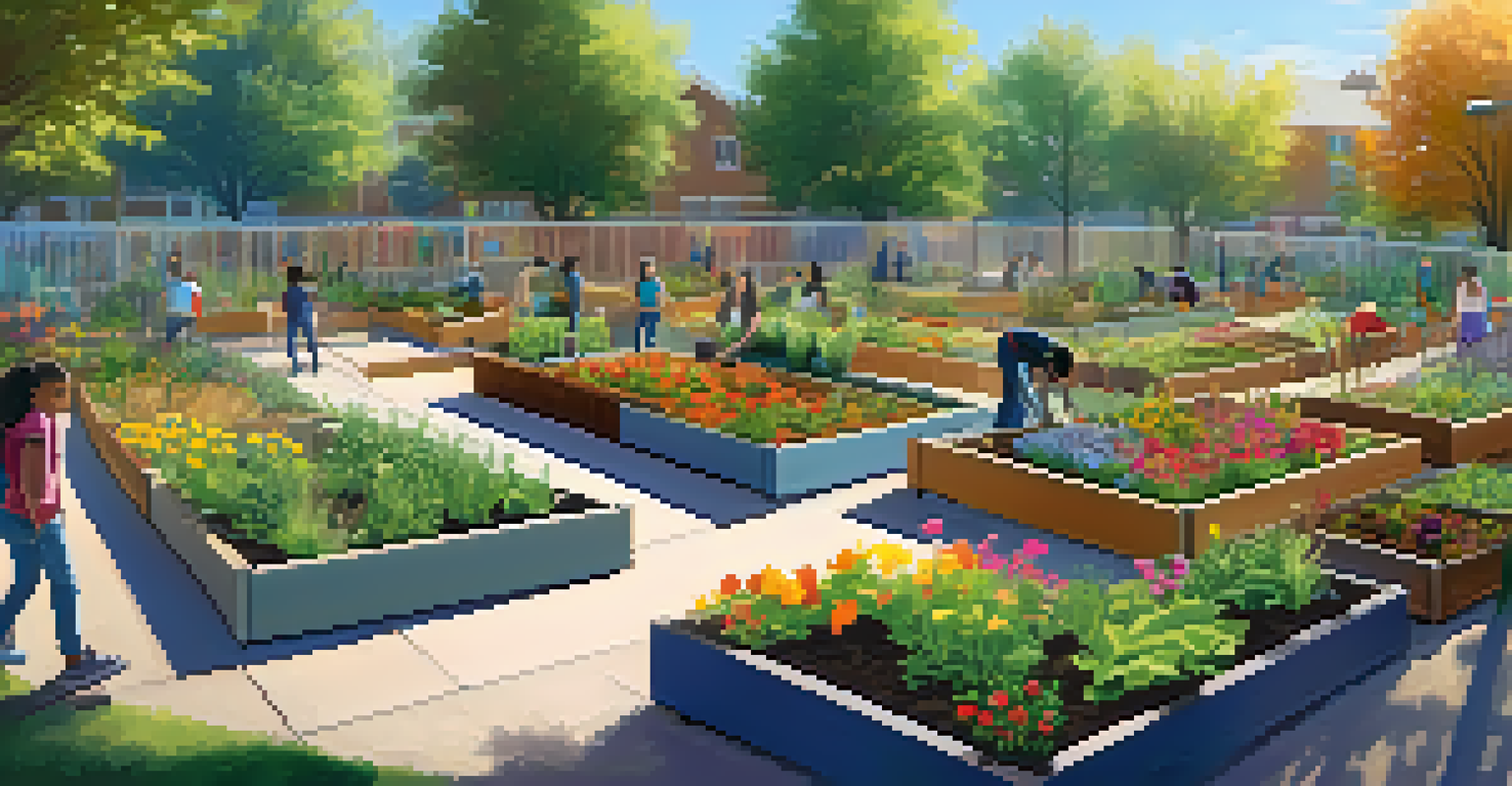Creating Inclusive Outdoor Learning Environments

Understanding the Importance of Inclusivity in Learning
Inclusivity in education means ensuring that every learner has equal access to learning opportunities. In outdoor learning environments, this concept takes on a special significance as nature can provide unique experiences for students of all abilities. By fostering inclusivity, we not only enhance the learning experience but also promote social cohesion among diverse groups.
Inclusion is not a matter of political correctness. It is the key to growth.
Imagine a classroom where every student feels valued and capable, regardless of their background or abilities. This sense of belonging is crucial for fostering confidence and encouraging participation. When outdoor environments are designed with inclusivity in mind, they can serve as powerful tools for engaging all learners.
Moreover, inclusive outdoor spaces can inspire creativity and curiosity. They allow students to interact with their surroundings in meaningful ways, facilitating hands-on learning experiences that resonate with different learning styles. Embracing inclusivity means acknowledging that every student brings unique strengths to the table.
Assessing Current Outdoor Spaces for Inclusivity
Before creating inclusive outdoor learning environments, it's essential to assess existing spaces. This involves identifying barriers that may prevent certain students from fully engaging in outdoor activities. Accessibility is a key factor; for example, paths should be wide and smooth enough for wheelchairs, and play equipment should accommodate children of all abilities.

Consider also the sensory experiences offered by the space. Outdoor environments should cater to diverse sensory needs—some students may thrive in vibrant, stimulating areas, while others might prefer quieter, more subdued settings. Conducting surveys or focus groups with students and educators can provide valuable insights into what changes are necessary.
Fostering Inclusivity in Learning
Creating inclusive outdoor learning environments enhances student engagement and promotes social cohesion among diverse groups.
By systematically evaluating current outdoor spaces, educators can lay the groundwork for more inclusive environments. This proactive approach not only benefits students with disabilities but also enhances the overall experience for all learners, encouraging collaboration and exploration.
Designing Accessible Outdoor Learning Features
Incorporating accessible features into outdoor learning environments is crucial for inclusivity. This can include ramps, accessible restrooms, and sensory gardens that provide both visual and tactile experiences for students. Such features ensure that all students can participate in outdoor activities without feeling excluded.
Education is the most powerful weapon which you can use to change the world.
Think about how natural elements can be integrated into the learning experience. For instance, raised garden beds allow students of varying heights and abilities to engage in gardening activities. Similarly, using materials that are easy to manipulate can help students with fine motor challenges fully participate in crafts and projects.
By thoughtfully designing outdoor learning features, educators can create spaces that are welcoming to everyone. These inclusive designs not only enhance the educational experience but also promote a sense of ownership and pride in the outdoor environment.
Encouraging Collaborative Learning in Outdoor Spaces
Outdoor learning environments are perfect for fostering collaboration among students. Group activities and projects can be enhanced by the natural setting, allowing students to work together in ways that might not be possible indoors. This collaborative spirit is essential for building social skills and empathy among diverse learners.
Consider implementing team-based activities that require students to rely on each other's strengths. For instance, nature scavenger hunts can encourage communication and cooperation, as students must collaborate to solve challenges. Such activities not only promote inclusivity but also help students develop critical thinking skills.
Assessing Spaces for Accessibility
Regularly evaluating existing outdoor spaces helps identify barriers and ensures all students can fully engage in outdoor activities.
Creating opportunities for peer mentoring in outdoor settings can also enhance collaborative learning. By pairing students with different abilities, educators can encourage them to learn from one another, fostering mutual respect and understanding in the process.
Engaging Families and Communities in Outdoor Learning
Building inclusive outdoor learning environments extends beyond the classroom; it involves engaging families and communities. When families are actively involved, students feel supported and empowered, which enhances their learning experience. Open communication about outdoor activities can foster a sense of belonging and investment in the learning environment.
Consider hosting community events or workshops that invite families to participate in outdoor learning activities. This not only strengthens the connection between school and home but also allows families to share their unique perspectives on inclusivity. Such collaborations can lead to innovative ideas for enhancing outdoor spaces.
Ultimately, community involvement enriches the educational experience for all students. By embracing diverse perspectives, educators can create outdoor learning environments that truly reflect the values and needs of the community.
Promoting Environmental Awareness and Stewardship
Inclusive outdoor learning environments also provide an opportunity to instill a sense of environmental stewardship among students. Teaching children about nature and conservation fosters a sense of responsibility for the planet, which is crucial for future generations. This awareness can be integrated into lessons and activities, allowing students to connect with their surroundings.
Consider hands-on activities like tree planting or nature clean-up days that engage students in caring for their environment. Such experiences not only promote teamwork but also allow students to see the impact of their actions on the ecosystem. When students feel a connection to nature, they are more likely to value its preservation.
Engaging Families and Communities
Involving families and communities in outdoor learning strengthens connections and enriches the educational experience for all students.
By promoting environmental awareness in inclusive settings, educators can inspire students to become advocates for sustainability. This holistic approach to learning nurtures not only academic skills but also ethical values that extend beyond the classroom.
Evaluating and Adapting Outdoor Learning Practices
Creating inclusive outdoor learning environments is an ongoing process that requires regular evaluation. Educators should continuously assess the effectiveness of their outdoor activities and make adjustments based on feedback from students and families. This adaptive approach ensures that all learners receive the support they need.
Consider establishing a feedback loop where students can share their experiences and suggestions for improvement. This not only empowers students but also fosters a culture of collaboration and continuous learning. By involving students in the evaluation process, educators can gain valuable insights into what works and what doesn’t.

Ultimately, adaptability is key to maintaining inclusive outdoor learning environments. As needs change and evolve, so too should the practices and features that support them, ensuring that every student feels valued and included.